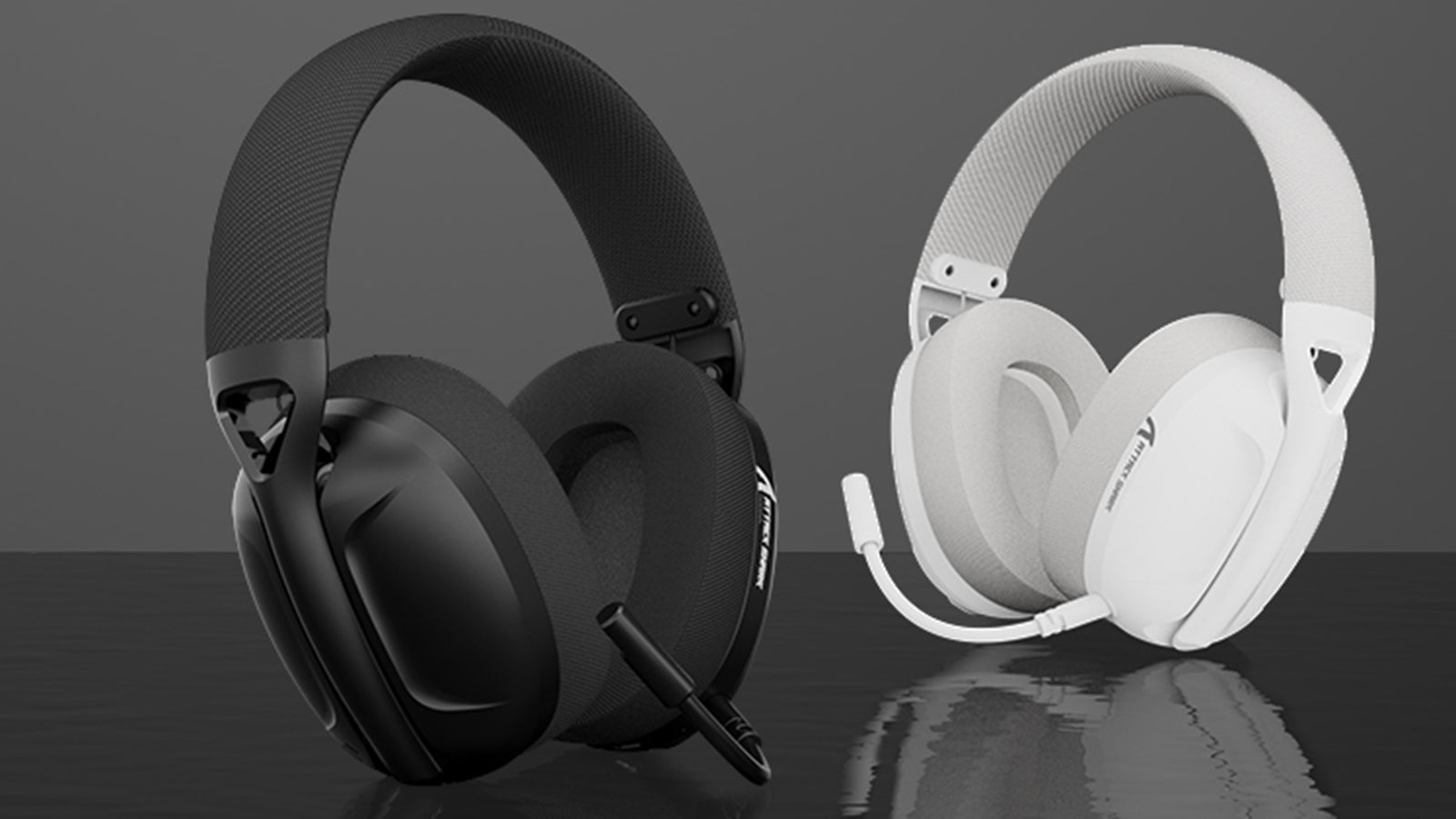In der heutigen modernen Welt sind Headsets zu einem wichtigen Kommunikations-, Unterhaltungs- und Arbeitsgerät geworden. So hervorragend sie in Klangqualität und Komfort sind, ist es wichtig, ihre Vorteile gegen mögliche Nachteile wie Hörverlust und Unbehagen abzuwägen. Dieser Artikel möchte Ihnen beide Seiten der Headset-Medaille vorstellen, damit Sie fundierte Entscheidungen darüber treffen können, wie Sie Headsets in Ihr Leben integrieren können.
Welche verschiedenen Arten und Verwendungszwecke gibt es von Headsets?
Arten von Headsets
- Over-Ear-Headsets umschließen das Ohr und bieten einen immersiven Klang und eine hervorragende Geräuschisolierung. Sie sind ideal für Gaming oder professionelle Audioproduktion.
- On-Ear-Modelle sitzen auf den Ohren und bieten einen Kompromiss zwischen Tragbarkeit und Klangqualität und eignen sich für gelegentliches Musikhören.
- In-Ear-Headsets, besser bekannt als Ohrhörer, sitzen im Gehörgang und bieten Komfort und Mobilität, geeignet für die Verwendung mit Mobiltelefonen unterwegs.
- Knochenleitungs-Headsets übertragen den Schall durch den Schädel und ermöglichen so die Wahrnehmung von Umgebungsgeräuschen – ideal für Sport und den Einsatz im Freien.
Häufige Verwendung
Headsets werden typischerweise für die Kommunikation eingesetzt, beispielsweise für Telefonate und Videokonferenzen, bei denen eine klare Audioqualität unerlässlich ist. Sie werden auch für die Unterhaltung verwendet, beispielsweise zum Musikhören, Spielen und Ansehen von Filmen. Headsets sind auch im Arbeitsumfeld für Podcasts und Rundfunksendungen wichtig, da hier eine hochwertige Audioausgabe erforderlich ist.

Welche Vorteile bietet die Verwendung von Headsets?
1. Verbesserte Audioqualität
Headsets bieten dank Geräuschunterdrückung ein verbessertes Hörerlebnis. Sie unterdrücken Hintergrundgeräusche und sorgen so für eine bessere Audioqualität. Sie bieten außerdem eine bessere Klangqualität als herkömmliche Lautsprecher und steigern so den Musik- und Filmgenuss.
2. Komfort und Tragbarkeit
Die freihändige Bedienung ermöglicht dem Benutzer Multitasking, ohne dass seine Mobilität darunter leidet. Dank ihrer geringen Größe können sie in den meisten Umgebungen eingesetzt werden, ob zu Hause, am Arbeitsplatz oder unterwegs.
3. Fokus und Produktivität
Durch die Geräuschunterdrückung fördern Headsets die Konzentration und eignen sich daher ideal für den Einsatz im Homeoffice, wo die Vermeidung von Ablenkungen oberste Priorität hat. Die Fähigkeit, eine konzentrierte Umgebung zu schaffen, steigert die Produktivität erheblich.
4. Gesundheitliche Vorteile
Die meisten Headsets sind ergonomisch konstruiert, um körperliche Belastungen bei längerem Tragen zu minimieren. Einige der neuesten Modelle verfügen über Hygienefunktionen, die das Risiko von Mittelohrentzündungen verringern und gleichzeitig die Gesundheit und den Komfort verbessern.
Welche potenziellen Nachteile hat die Verwendung von Headsets?
Hörprobleme
Das Tragen von Headsets bei hoher Lautstärke kann langfristig zu Hörverlust führen. Achten Sie auf sichere Lautstärken, typischerweise unter 85 Dezibel, und legen Sie zum Schutz Ihres Gehörs häufig Pausen ein.
Körperliche Beschwerden
Das Tragen eines Headsets über einen längeren Zeitraum kann aufgrund des Drucks, der durch das Design des Headsets entsteht, zu Ohrenschmerzen oder Ermüdung führen. Passformprobleme oder Druck auf den Kopf führen am ehesten zu Beschwerden, was die Notwendigkeit ergonomischer Designs und einstellbarer Funktionen unterstreicht.
Technische Probleme und Verbindungsprobleme
Kabellose Modelle können Herausforderungen mit sich bringen, wie beispielsweise eine begrenzte Akkulaufzeit, die häufiges Laden oder Austauschen erfordert. Darüber hinaus können Bluetooth-Verbindungsprobleme wie Signalstörungen die Klangqualität und das Benutzererlebnis beeinträchtigen. Daher ist es wichtig, zuverlässige Technologie zu wählen und die Geräte ordnungsgemäß zu warten.

Wie können Sie die Risiken der Verwendung von Headsets mindern?
Um Ihr Gehör zu schützen, halten Sie die Lautstärke Ihres Headsets auf höchstens 85 Dezibel. Nutzen Sie Apps oder integrierte Geräteeinstellungen, um den Dezibelpegel zu überwachen. Eine gute Faustregel ist die 60/60-Regel: Hören Sie maximal 60 Minuten am Stück mit maximal 60 % Lautstärke. Regelmäßige Pausen ermöglichen Ihren Ohren die Erholung von längerem Gebrauch und verringern so das Risiko von Gehörermüdung und Hörverlust.
Achten Sie bei der Auswahl eines Headsets auf Komfort, Klangqualität und Benutzerfreundlichkeit. Wählen Sie Modelle mit verstellbaren Kopfbügeln und gepolsterten Ohrpolstern, um Druckstellen zu reduzieren. Berücksichtigen Sie Ihre Hauptanwendung – Gaming-Headsets bieten in der Regel eine verbesserte Geräuschunterdrückung, Ohrhörer können jedoch für unterwegs die bessere Wahl sein. Probieren Sie verschiedene Modelle im Handel aus, um ein Modell zu finden, das bequem sitzt und auch bei längerem Tragen nicht schmerzt, sodass Sie Funktionalität und Komfort genießen können.
Halten Sie Ihre Headsets sauber, indem Sie sie mit einem feuchten Tuch abwischen, um Schmutz und Öle zu entfernen. Verwenden Sie bei In-Ear-Kopfhörern Alkoholtücher oder tauschen Sie die Ohrstöpsel regelmäßig aus. Bewahren Sie Ihre Headsets bei Nichtgebrauch in einer schützenden Tragetasche auf, um Schäden und Staubablagerungen zu vermeiden. Beachten Sie die Anweisungen des Herstellers zu speziellen Reinigungstechniken und zur Batteriepflege, um die Produktlebensdauer zu maximieren.

Was hält die Zukunft für Headsets bereit?
Neue Technologien
Kopfhörer werden intelligent und verfügen über Spitzentechnologie wie erstklassige Geräuschunterdrückung für noch ruhigere Hörumgebungen und Audio-Feinabstimmung mit persönlicher Auswahlunterstützung. Die Kombination aus KI revolutioniert das Hörerlebnis, indem sie intelligente Klanganpassung sowie individuelle Audio-Optimierungen ermöglicht, die für verschiedene Umgebungen und Aktivitäten geeignet sind.
Umweltaspekte
Da Nachhaltigkeit immer wichtiger wird, setzen Hersteller von Headsets zunehmend auf umweltfreundliche Produkte und nachhaltige Prozesse. Dazu gehört die Verwendung von recyceltem Kunststoff und biologisch abbaubarem Material, um die Umweltbelastung zu reduzieren. Verbraucher können zur Nachhaltigkeit beitragen, indem sie Headsets von Unternehmen kaufen, die sich für Umweltschutz engagieren, und sich über das verantwortungsvolle Recycling und die Entsorgung alter Geräte informieren. Einige Hersteller bieten Rücknahmeprogramme an oder informieren Kunden über das ordnungsgemäße Recycling von Elektroschrott, sodass keine gebrauchten Headsets auf überfüllten Mülldeponien landen.






Hinterlasse einen Kommentar
Diese Website ist durch hCaptcha geschützt und es gelten die allgemeinen Geschäftsbedingungen und Datenschutzbestimmungen von hCaptcha.